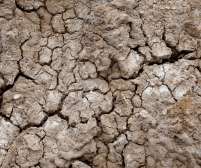Back in Black: Creating positive changes by focusing on a short-lived pollutant
HumanNature
MARCH 31, 2021
2011), and the World Health Organization has recommended evaluating a separate health standard for black carbon exposure independent of other particle concentration measurements (World Health Organization 2012). AMAP Assessment 2015: Black Carbon and Ozone as Arctic Climate Forcers.” Arctic Council. June 25, 2020. link] Brook Robert D.,










Let's personalize your content